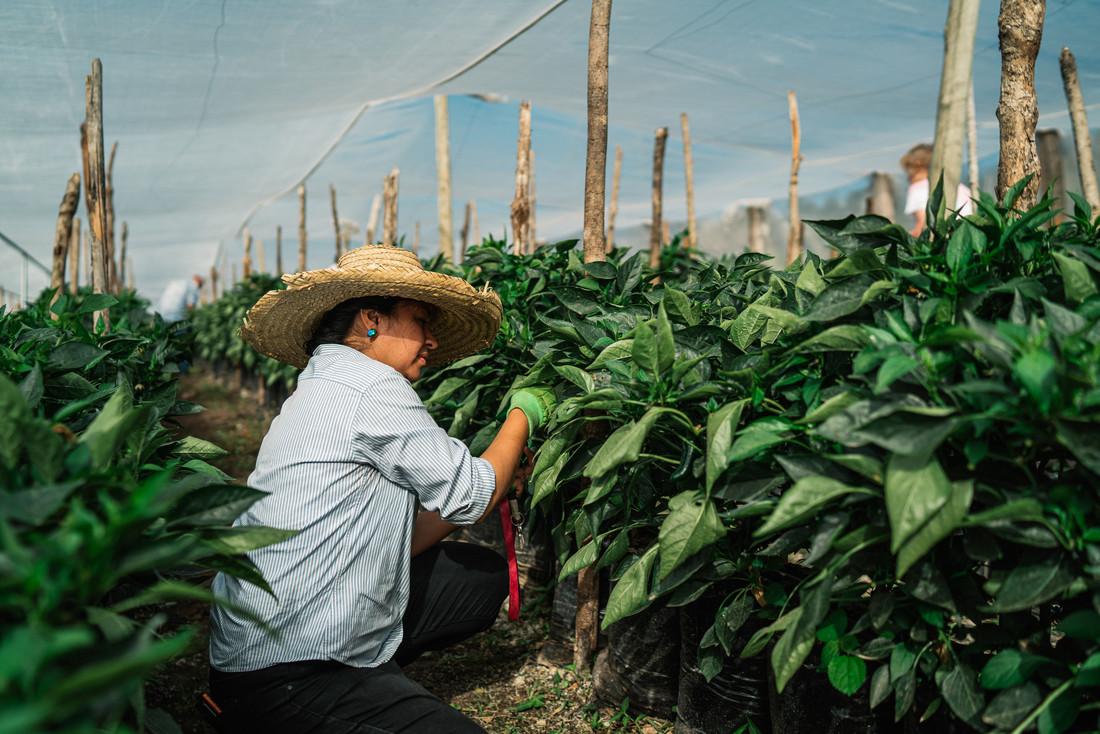All You Need to Know About Sustainable Agriculture

You’ve probably heard of “sustainable agriculture” before. In the agriculture industry, it has become a mantra, but what does the term mean?
In our fast-changing world, can anything be sustainable? With the earth’s population growing every day, the need for more resources has grown as well. This is where the term “sustainable agriculture” creates a sense of purpose and urgency that sparks innovation and change in agriculture.
This article will explain why sustainable agriculture is essential in developing healthy food, protecting the environment, and conserving rural communities’ livelihoods.
What is sustainable agriculture?
Sustainable agriculture can be defined in many ways, but it is mainly focused on methods of producing food, fiber, crops, or animal products that can be maintained and have the least effect on natural resources or land. Sustainable agriculture supports farmers and societies by implementing practices that are efficient and beneficial to each community.
Besides preserving the earth’s natural resources, sustainable agriculture contributes to soil fertility, erosion reduction, and water preservation. To ensure a healthy livelihood, farmers use specific methods to comply with current sustainable practices.
Why do we need sustainable agriculture?
The need to change our agricultural system is becoming more apparent every day. There are several reasons why we should move from an industrial food system to a sustainable one.
For years, most of our food has been produced by industrial agriculture using enormous amounts of chemical pesticides and fertilizers, which harm the soil, water, and air. The excessive use of chemical fertilizer and pesticides has induced environmental degradation and dramatically affected plant life – which not only affects our food systems, but also has global results. This can have effects on our food systems as well as human life on a global scale.
Sustainable agriculture offers resistance to the effects of climate change, and rebuilds and revitalizes depleted soil and related systems as well. It aims to explore a number of alternative planting processes and fertilizers, including contaminating materials that are environmentally sustainable and revitalizing the plant’s growth.
The main objectives of sustainable agriculture
- Healthy environment – Better management of resources and streamlined practices that will minimize pollution and adverse environmental impacts.
- Economic profitability – Preserving the financial viability of farms and promoting business sustainability, including re-investment potential.
- Social and economic equity – Maintaining food stability through practices that guarantee access to food and enhance the well-being of farmers by not taking advantage of them.
- Food security – Equipping farmers and their communities with sustainable methods that ensure enough food for them and their families, as well as a consistent income.
Every farmer, food producer, manufacturer, supplier, and customer plays an essential role in maintaining a sustainable agriculture system.
Why is sustainable agriculture important?
Sustainable agriculture consists of practices through which each farmer and community member acquires common interests in smart farming systems, resolving issues regarding food sustainability and more.
Sustainable agriculture aims to fulfill current needs by ensuring water quality as well as preserving biodiversity and wildlife habitats. This is a renewable means of generating and consuming energy, improving plant and animal production, and implementing fair labor practices to ensure social and economic equity.
Sustainable agriculture is a holistic approach that mitigates climate change impacts on agriculture.
Sustainable agriculture practices
Sustainable agriculture aims to protect the environment, expand the earth’s natural resource base, maintain and improve soil fertility.
Here are some sustainable agricultural practices that have evolved over decades of research and experience:
1. Crop rotation
For centuries, farmers have used crop rotation as a way to keep the soil healthy and prevent nutrients from being depleted. Crop rotation involves planting various crops in different seasons in the same area. Doing so contributes to maintaining or improving soil health and sustaining or increasing farm production over time. It also contributes to reducing harmful pests because certain cultivated plants can help disrupt the cycle of pest growth. In this way, farmers benefit from crop rotation as the use of pesticides is reduced.
2. Permaculture
Permaculture is a food-processing system intended to minimize waste and improve production output, developing smart agriculture. The principles of permaculture and ethical practice can apply to many development sectors, including local economies, energy systems, water supply, and food production.
The focus of permaculture methods is to use seasonal plants such as fruit trees, nut trees, and shrubs, all of which work in a structure similar to the way plants act in a natural environment.
3. Reduce tillage
No-till farming increases the resilience of the soil. This enhances water retention, preserves soil nutrients, and retains organic composition in several agricultural crops. By using low or no-till techniques, farmers can reduce soil erosion and increase the beneficial microorganisms in the soil that promote plant growth.
4. Integrated pest management (IPM)
Integrated pest management combines pest control strategies in the early stages of farming to locate and detect pests. Several approaches, including mechanical controls such as tillage, flaming and traps, as well as biological controls namely the addition of predators and competitors for the pests, can consistently be applied to manage pest populations while reducing chemical pesticides.
It is, therefore, necessary to understand that not all pests are destructive, including pests like bees and ladybugs, and it is more appropriate to allow them to coexist with the crop rather than spend money trying to exterminate them.
5. Managed grazing
Managed grazing essentially entails the transfer of livestock to various pastures so that they can graze on different plants. This serves to give the animals a wide variety of foods and reduces the risk for disease or infection, which can develop among livestock that have overgrazed on the same pastureland for a long time.
It is additionally beneficial to move livestock to different pastures because animal manure tends to promote accelerated regeneration of pasture plants.
6. Agroforestry
Agroforestry involves the growth of trees on grazed lands, integrating farming and forestry activities with sustainable approaches to secure long-term and profitable land use. This helps to maintain soil moisture and fertility. Furthermore, the temperature of the soil is preserved, and erosion during heavy rain is reduced as good soil fertility preserves nutrients in the soil.
How you can help
These are just some examples of sustainable agriculture. Numerous methods exist within sustainable farming practices, such as regenerative agriculture, holistic agriculture, biodynamics, and organic production systems.
We want to protect the environment, feed people, promote healthy communities, and do what is necessary to keep people from starving. You can help us advocate for sustainable agriculture by making a contribution to support our food security programs around the world.
Share This Story
MORE STORIES AND NEWS LIKE THIS
Loving our Neighbor: A Net Zero Lent Challenge
Loving our Neighbor: A Net Zero Lent Challenge Most of us in the West are
Climate Huddle Conversations
Climate Huddle Conversations How do we move the needle on climate action? According to Dr. Katherine
Climate Change Advocacy at the Community Level
Climate Change Advocacy at the Community Level With the release of the latest Intergovernmental Panel



